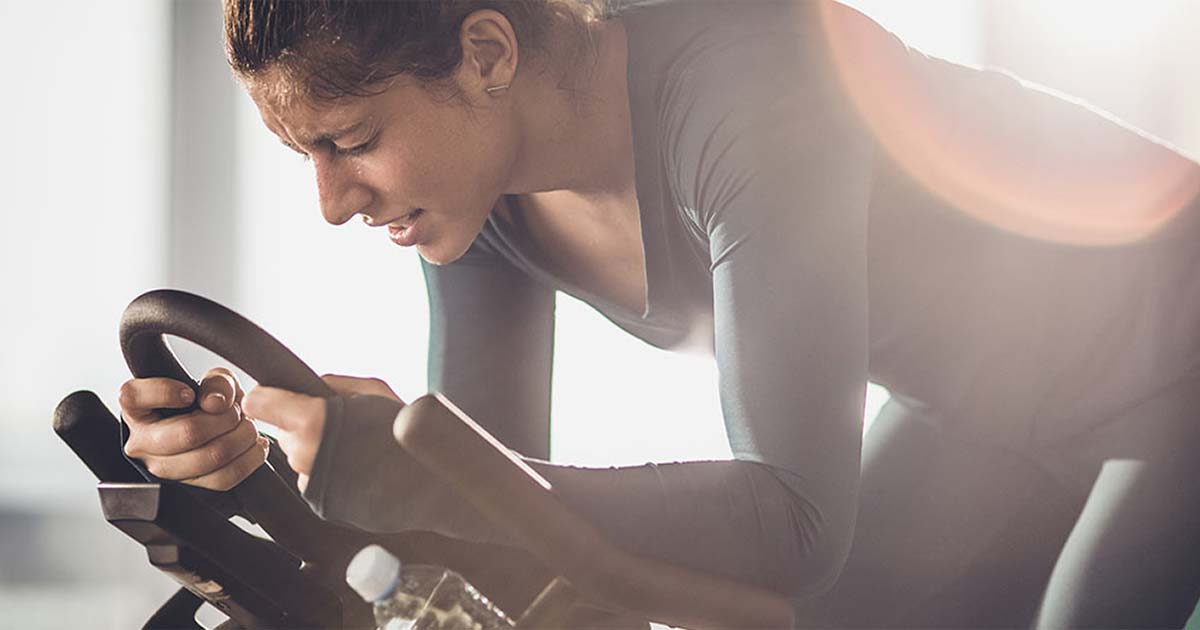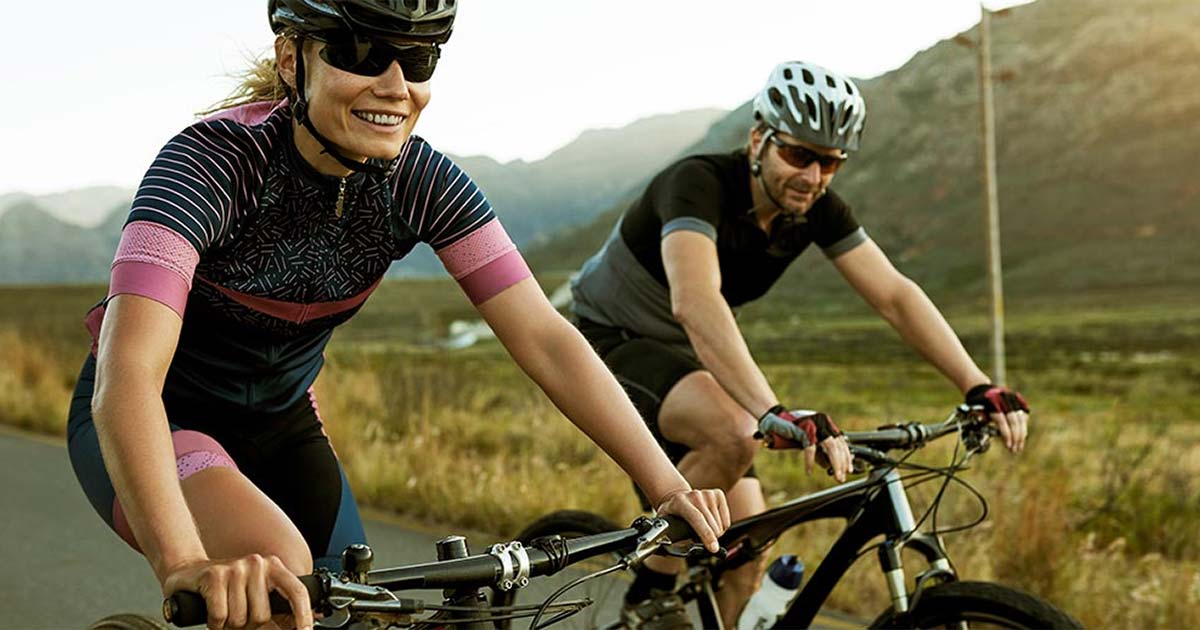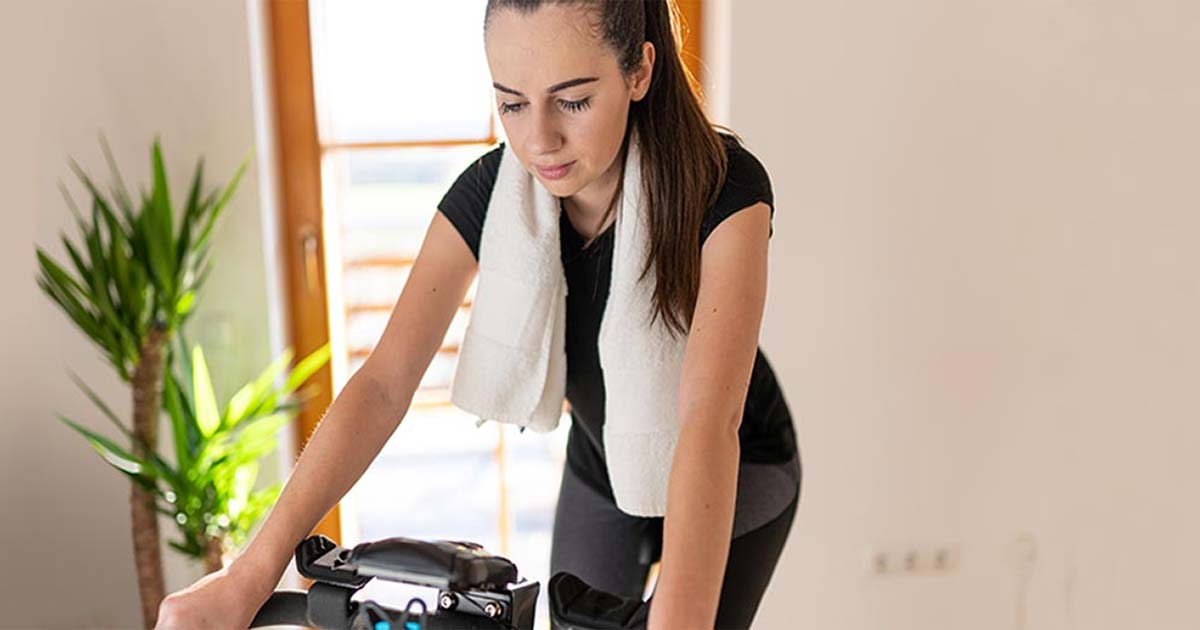Is Your Spin Bike Causing You Pain? Here’s How to Avoid It
Advice to improve your movement, fitness, and overall health from the world's #1 in orthopedics.
On the whole, indoor cycling is an excellent choice for exercisers with existing injuries, or anyone who wants to get their heart pumping in a gentle-on-the-joints way. But spinning can still cause its own aches and pains, primarily because of how you're riding.
Before you hop in the saddle next time, take a minute to assess your bike setup. Fit is highly individual and can have a big effect on your posture and which muscles you rely on.

If your bike is good to go, check your body position. "Your goal is to have a long spine," says Aaron Karp, MS, ATC, CSC, an exercise physiologist at the Tisch Sports Rehabilitation and Performance Center and HSS Brooklyn. "People often ride with a flexed spine, bent over, or hyperextended, arching their back and sticking their chest out a little too far. Both of those will create stress in different ways." Neutral is the posture you're looking for.
It's also important to engage your core muscles. "You don't need to violently activate them, like doing a crunch, but they should be turned on the whole time," he adds. "Eventually it will become second nature."
The last piece of the puzzle is your form. Karp offers the following guidelines to help protect your body from indoor spinning-related pain. If you try all these tips and still feel pain, a qualified exercise physiologist or primary care sports medicine doctor can help.
Pain Point: Knees
Knee pain from indoor cycling is quite common. "It's usually a setup problem," says Karp. "Either your knees are bending too much, or you're too far forward or back." This can cause you to rely too heavily on your quads, which over time could overload your knees, and not enough on your glutes and hamstrings. These larger muscles assist in generating more power while also improving the alignment of your knees.
The issue can largely be fixed through technique. "Think about pulling up with each pedal stroke, not just pushing down," says Karp, "and if your knees hurt, sit back a little bit further and see if that helps."
Pain Point: Lower Back
The lumbar spine, or lower back, is another frequent source of exercise-bike-related pain. The problem can also be caused by the positioning of your seat—typically too high.
One way to know if this is the case is if your hips drop to either side as you pedal. "When you push down with your right leg and your right hip goes with it, and the same thing happens on the left, that can mean that you have to overreach and your knees aren't bending enough," says Karp. "That shifting of the pelvis is then also happening in the lumbar spine, which creates stress there."
If your seat is at the right height, the culprit could be a lack of core strength, especially if you do a lot of sprinting. "Most people don't have the strength or core stability to go above 120 RPMs," says Karp. "You'll get the sensation that you're bouncing on the saddle, which means your lumbar spine isn't supported. I recommend staying below that number."
It's important to maintain a neutral spine, even later in the workout, as you get tired.
Pain Point: Hips
Since indoor cycling, and biking generally, is so low impact, the hips are generally not negatively affected. Tightness in the front of the hip, the hip flexor, might mean you need to do some extra stretching or foam rolling, or it might signal a preexisting issue, says Karp. If you feel any discomfort there, it's important to address the underlying problem. A visit to an exercise physiologist or primary care sports medicine doctor could be in order.
Pain Point: Upper Back, Neck and Shoulders
"I group pain in the upper back, shoulders and neck together because it is all caused by the same problem, which is that you're overloading that region," says Karp.
There are a few principles to follow to avoid issues: First, don't put too much weight on your handlebars. You should be able to use your core to support you and keep you upright. "Your hands shouldn't be sore after a workout," he adds.
You could also be shrugging your shoulders or rounding your back—a common-enough occurrence that you'll often hear from instructors reminding you to bring your shoulders away from your ears. It happens a lot for people who sit all day, says Karp. "Also, when you're grabbing the bars, think about trying to pull the bars apart. That will turn both hands outward and lock your shoulders into the position you're looking for."
If your neck bothers you after a ride, try lifting your handlebars a bit higher.
Pain Point: Elbows and Wrists
For people who ride outdoors, narrower or wider handlebars are frequently recommended to help keep the wrists in a more neutral position. But on a spine bike, that isn't an option.
Instead, be conscious of how much you're pressing into the bars as you ride and how your hands are positioned. "Put most of the weight that goes into your hands on that thick pad of muscle that runs along your thumb," says Karp. If you're already doing that and still feeling pain in your wrists or palms, try a pair of gloves. Karp especially recommends using them if you do ride for longer than 60 minutes.
Published 1/4/2021




